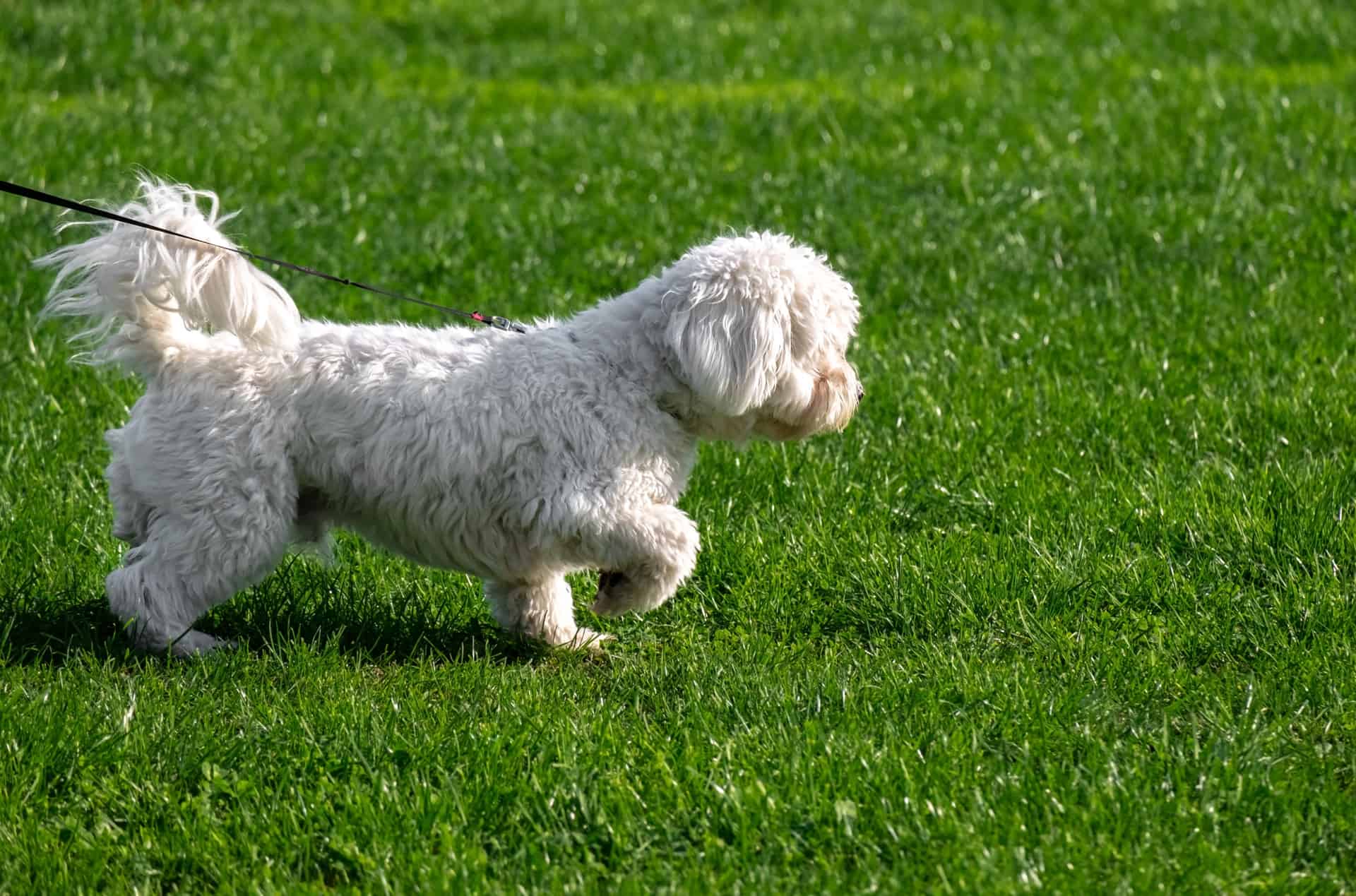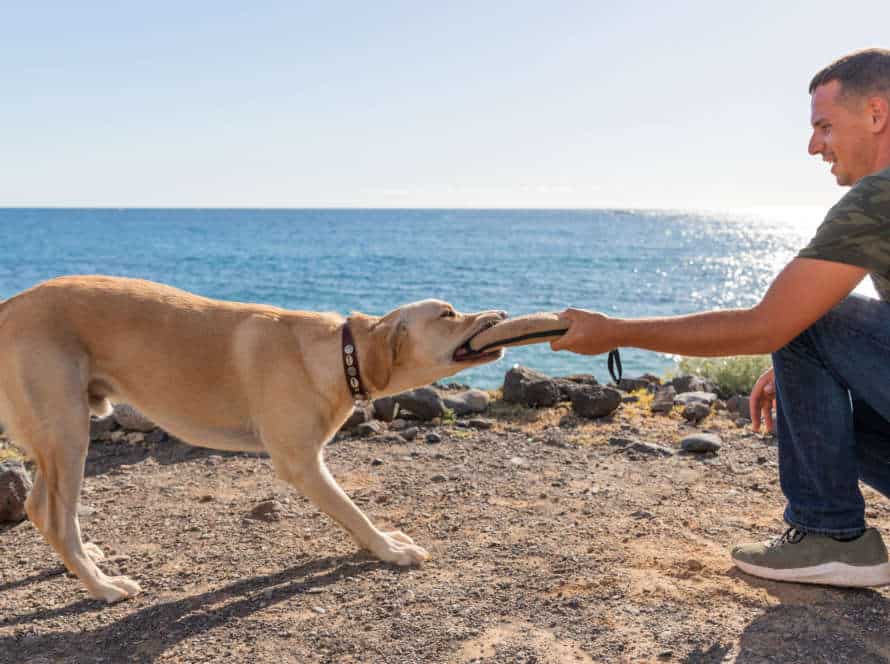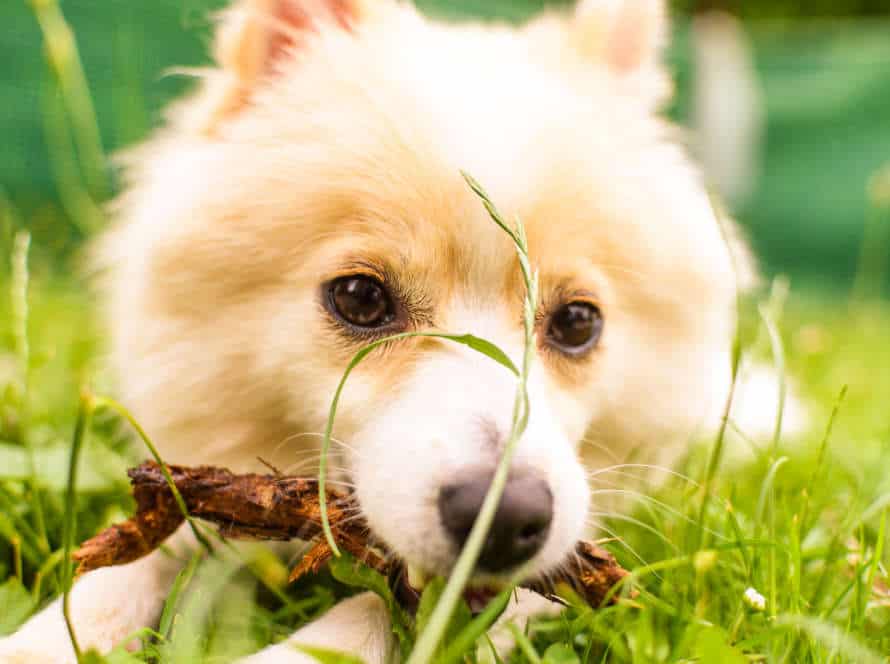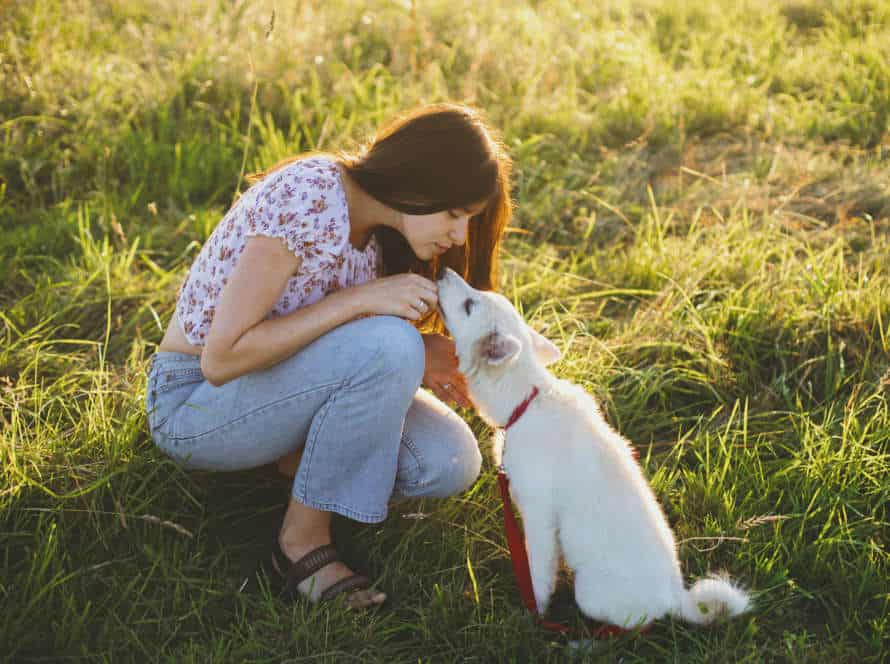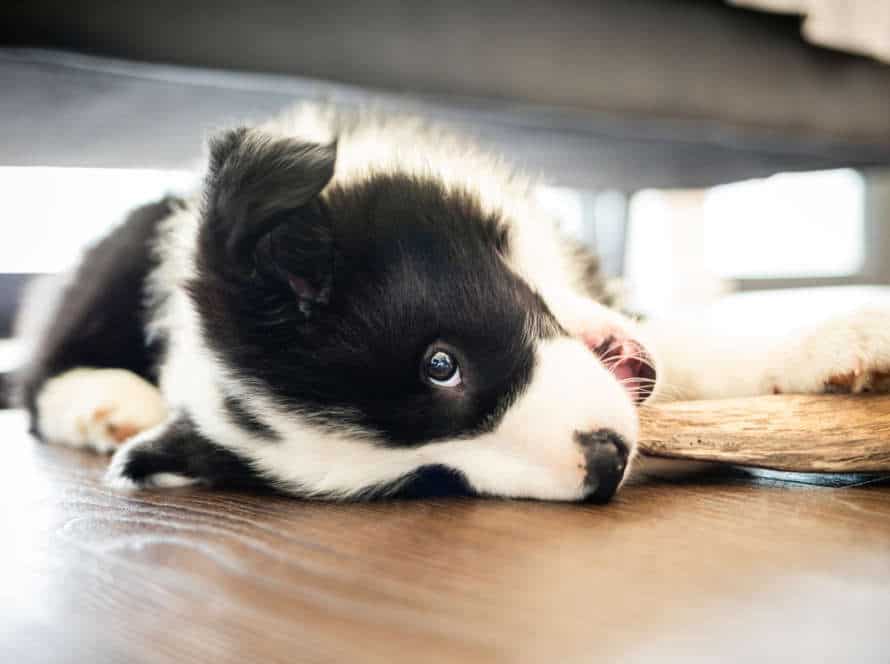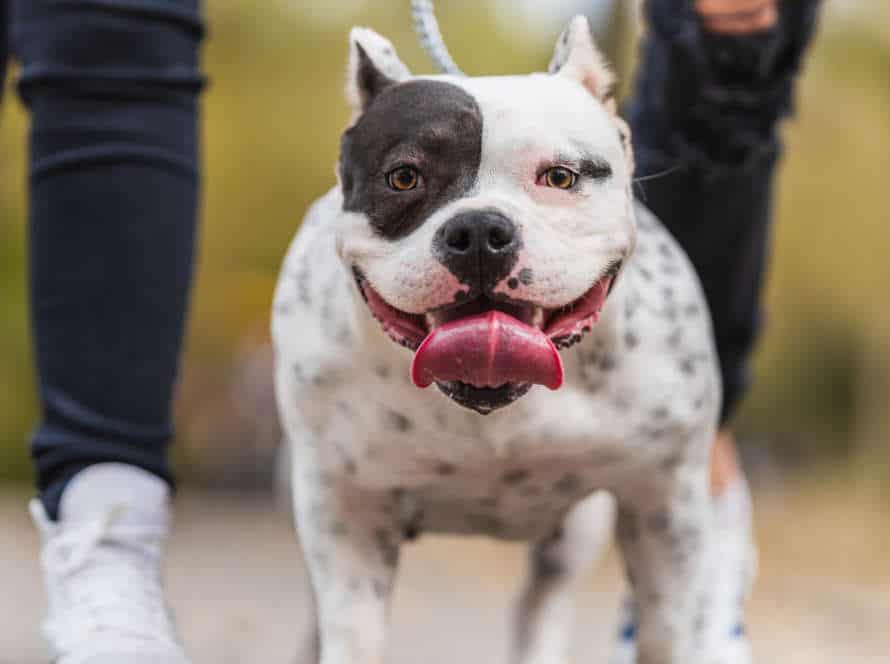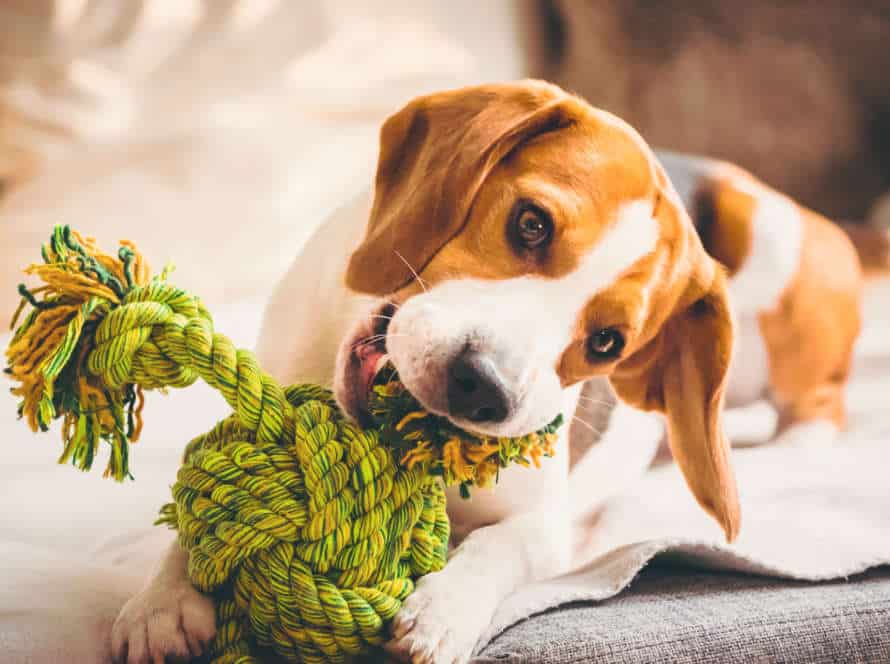Building Positive Associations with the Leash for Your Puppy
Training your pup to relate the leash with positive vibes is key for good leash behavior, avoiding problems and making outdoor activities a fun time for both you and your pet. Here are tips for making the leash a positive experience for your pup:
- Start at home and let your pup explore the leash at its own speed.
- Use treats and praise to reward pup for approaching and playing with the leash.
- Attach the leash to its collar and let it wear it for short supervised periods. Reward it for wearing the leash and moving around.
- Gradually increase length and frequency of sessions while being aware of its comfort.
- Use the leash for brief walks in familiar and low-stress settings. Reward pup for good leash manners and take breaks when necessary.
With patience, consistency and rewards, pup will have great leash manners and love outdoor adventures with you!
Understanding Leash Aggression
Leash aggression is a common issue. If your pup’s displaying it, take steps to make the leash a positive thing. Here are some tips to help your pup get comfy with it!
- Create positive associations: make it fun, reward them, talk to them in a soothing voice.
These things can help reduce leash aggression and make your pup more content with being leashed.
Understanding the causes of leash aggression
Leash aggression in dogs is an issue. It can cause worry and dread when you take your pooch for a walk. Possible causes are fear, frustration, or lack of socialization during puppyhood.
A good way to help your pup is to give it positive associations with the leash. Here are some tips:
- Start early by getting your pup used to a collar and leash during play.
- Use treats and praise to reward good behavior and make the leash fun.
- Take your pup for walks and let them socialize with other dogs and people.
- Choose a comfortable and fitting leash and collar that won’t hurt your pup.
- Be consistent and patient with your training to help your pup overcome leash aggression.
Warning signs of leash aggression in your puppy
Leash aggression can be a common problem in puppies. It can be dangerous if not managed right. Here are some warnings to look out for:
- Growling, barking, or lunging when seeing other dogs or people.
- Pulling on the leash so bad that it chokes or gags your pup.
- Being stiff, anxious, or frozen during walks.
- Showing destructive behavior when leashed.
If you find your pup doing any of these, take action ASAP. Positive reinforcement and good associations with the leash can help with leash aggression. Bonus Tip: Attend puppy training classes to help with leash aggression.
How to prevent leash aggression
Leash aggression is a common problem with dogs. To prevent and manage it, you need to build positive associations with the leash for your puppy. Plus, know your dog’s behavior and needs. Use these tips:
- Introduce the leash and collar to your pup early on.
- Associate the leash with positive experiences e.g. play, treats, praise.
- Teach basic obedience commands and introduce them to different walking environments.
- Carry treats and toys to encourage good behavior.
- Socialize your pup often to reduce stress, anxiety during walks.
- Know triggers that lead to aggression and avoid them.
- With patience and consistency, leash aggression can be overcome.
Walks can be an enjoyable experience for you and your furry friend.
Choosing the Right Leash and Collar for Your Puppy
Picking the correct leash and collar for your puppy is key to successful training. Choose a collar and leash that’s comfy for your pup and brings positive vibes. Different leashes and collars have different benefits and drawbacks. Learn their features before buying to make the right choice.
Different types of leash and collar options
Choosing the right leash and collar is key when raising a pup. There are plenty of options in the market. Let’s take a look:
Leashes:
- Standard leash – Simple, affordable and comes in various lengths and widths. Usually made of nylon or leather.
- Retractable leash – Allows your dog to explore their surroundings while still having control. Lock the leash when needed.
- Martingale leash – Also called a limited-slip leash. Tightens when the pup pulls, so they won’t slip out.
Collars:
- Flat collar – Most common type. Made of nylon or leather.
- Harness – Safer for dogs with respiratory problems or certain breeds.
- Prong collar – Used for training to reduce pulling behavior.
Creating positive associations with the leash is important for your pup. Choose the right equipment and teach them the right way to make their time outdoors more enjoyable.
Factors to consider when purchased a leash and collar
When buying a leash and collar for your pup, there are few things to consider:
- Material: Nylon, leather, and chain are all good materials. Get a high-quality one that won’t strain your pup’s neck.
- Size: Make sure the leash and collar fit your pet’s size and weight.
- Purpose: Buy according to what you need them for – walking, training, or ID.
- Reflectivity: If you want to take your pup out at night, get reflective ones.
- Finally, create positive associations with the leash and collar. Reward your pup with treats or toys when they wear it.
Proper fit and usage of the leash and collar
Choosing the right collar and leash for your pup is vital for their safety and comfort while out on walks. It’s essential to make sure they fit properly and that you use them correctly. Here are some tips:
Collar: Pick one that fits snugly around their neck, with two fingers between it and their skin.
Leash: Get one suited to their size, strength and behavior. For instance, a retractable one for a well-trained dog; and a standard 6ft one for an untrained or excitable pup.
Usage: Start off with short walks to build positive associations. Then, gradually increase the time out.
Pro Tip: Always keep an eye on your pup and check the collar and leash are in good nick to avoid any mishaps.
Introducing Your Puppy to the Leash
Introducing a pup to leashes? Sounds daunting!
But, starting early is key. Create positive connections with the leash. Positive reinforcement and patience will help your pup adjust to the leash without fear. This article will explain the best way to introduce the leash to your puppy.
Getting your puppy used to the leash
Introducing your pup to the leash is important! Here’s how:
- Start with the collar or harness. Let your furry friend get comfy with it.
- Attach the leash and let them drag it round the home in a controlled environment.
- Reward good behaviour with treats and positive reinforcement.
- Take short, outdoor walks, gradually increasing distance. Reward good behaviour and use a calm, cheerful tone.
- Never yank or pull them. Instead, encourage and praise them for walking calmly.
Pro tip: Patience, consistency and positive reinforcement are key! Make it a positive, enjoyable experience.
Positive reinforcement training techniques
Positive reinforcement is an awesome way to teach your pup about the leash. Here are a few tips on how to build good associations with the leash:
- Leave the leash near your puppy’s bed or toys, so they can explore and play with it.
- Once they’re comfy, attach it to their collar and let them drag it around the house while supervised. This lets them get used to the weight and feel.
- Treats and praise them for allowing you to hold the leash and follow you, with it kept loose.
- Gradually introduce the idea of walking with the leash. Take small walks in a quiet, familiar place, like your backyard.
- Always praise and reward your puppy when they react positively to the leash. This will create a strong, positive connection between the behavior and the leash.
Gradually increasing exposure to the leash
Advance your pup’s leash exposure step-by-step. That’s the key to introducing them to it and making it a good experience. Here are the steps:
- Put the leash close to them while they play or eat. Let them get used to it.
- When they don’t show fear or worry, attach it to their collar for short periods. Supervise them.
- As time goes on, attach it for longer and let them explore.
- Give them treats and praise when they wear the leash. Make it a happy thing.
Before you know it, they’ll be comfy and confident. Walks and outdoor fun will be much more enjoyable!
Building Positive Associations with the Leash
Creating positive associations with the leash is essential for puppy training. It’s a tool to keep them safe, avoid stressful situations and give them guidance. This helps to keep the pup happy, safe and successful with the leash. Here are some tips on how to achieve this:
How to use treats and positive reinforcement
Using treats and positive reinforcement is a great way to make your pup see their leash in a good light. Here’s the process:
- Let your pup investigate the leash by leaving it near them.
- After they feel comfortable, attach it to the collar or harness for short periods and give a treat.
- Increase the time the leash is on them, rewarding with a treat.
- Practice walking in a calm, low-distraction area. Reward good behavior and stop when they get agitated.
- With consistent practice and positive reinforcement, your pup will be excited to walk with the leash!
Making the leash a part of playtime
Incorporating a leash into playtime is a great way to create positive feelings in your pup! Here’s how:
- Introduce the leash in a non-threatening spot – like your home or backyard.
- Use treats, toys, and praise to form a positive relationship with the leash. Give treats, and have fun with your puppy while holding the leash. Increase playtime with the leash gradually.
- When your puppy is comfy with the leash, take them on short walks around your block or yard. Keep using treats and praise.
- As you go, increase the length of time and distance of the walks to build your pup’s confidence.
Remember to be consistent and patient when introducing the leash, and to never use negative reinforcement or punishment. Pro tip: Make leash time fun and rewarding for your puppy!
Practicing leash skills in safe places
Encouraging leash skills in secure places can help your pup build pleasant connections with the leash. Here are a few tips to do so:
- Reward and praise your puppy when they show interest in the leash or move towards it.
- Begin training in safe, fenced-in areas such as your garden or a peaceful park.
- Keep the leash loose, enabling your pup to explore their environment while on the leash.
- As your puppy gets relaxed, slowly increase the level of distraction by moving to noisier, more crowded places.
With patience, regularity, and lots of treats, your pup will soon love their leash and anticipate long walks with their favorite human.
Troubleshooting Common Issues
Training your pup to enjoy a leash can be tough. Problems like staying calm while walking, pulling the leash, or even not wanting to wear the collar or harness can be tricky to solve. In this section we’ll talk about the most common issues owners face and give you useful tips to get your pup used to being on a leash.
Pulling on the leash
Leash-pulling is a common issue with puppy-training. To reduce this, building positive associations with the leash works. Here are tips to help your pup adjust:
- Introduce the leash to your puppy in a safe and controlled environment. Let them explore it on their own terms.
- Reward them with treats and praise for good interactions with the leash.
- Attach the leash to the collar and let them drag it around the house for a few minutes each day.
- Practice walking with your puppy in a safe and enclosed area. Reward them for good behavior and redirect them with treats or toys when they pull.
- With patience, consistency and positive associations, your pup can be a well-trained walker on a leash soon!
Fear of the leash
Fear of the leash is a common problem for pet owners, especially those with puppies. But, there are ways to make it better!
Introduce the leash gradually. Put it near your pup’s bed and let them sniff it – they’ll learn to feel safe.
Treats and positive reinforcement help, too. Encourage your pup to come closer to the leash, and give them a treat when they do. Do this until the leash is close.
Make sure the leash fits okay. It should be lightweight, and avoid yanking or pulling it – that can make them scared. With some patience and reward-based training, your puppy can learn to like the leash!
Pro Tip: Give tons of treats, praise, and love when your pup behaves with the leash. This will make the leash even better!
Aggression towards other dogs or people while on the leash
Many dog owners struggle with aggression when their pup is on the leash. To help, try to make the leash a positive thing. Here are some tips:
- Introduce the leash as something fun – use treats and playtime.
- Let your pup drag it around the house or yard.
- Reward good behavior with treats and praise.
- Consult a professional to find causes of aggression. Make a plan.
- Be patient, consistent, and prioritize safety.
Frequently Asked Questions
Q: How do I start building positive associations with the leash for my puppy?
A: Start by introducing the leash gradually, by leaving it near your puppy’s bed or playing with it in front of your puppy. Then, gradually move on to holding the leash while your puppy is comfortable with it being near them. Reward them with treats and praise for positive behavior whenever they are around the leash.
Q: How can I encourage my puppy to enjoy going on walks with the leash?
A: Start with short walks around the house or in a familiar and secure area. Bring treats and encourage your puppy with positive words and lots of praise. Gradually increase the length and difficulty of the walks, giving your puppy plenty of positive reinforcement along the way.
Q: Should I use a specific type of leash to help build positive associations with it?
A: It’s generally not the type of leash that matters but rather how it’s used. Choose a leash that is safe and comfortable for your puppy but focus on positive reinforcement of your puppy’s behavior instead.
Q: What should I do if my puppy is afraid of the leash?
A: It is not uncommon for a puppy to be scared of the leash. Start by leaving the leash on the floor for them to explore and become familiar with. Then, gradually start holding the leash while giving them treats whenever they show positive behavior. Patience and positive reinforcement will go a long way.
Q: How long does it take to build positive associations with the leash for my puppy?
A: The length of time it takes to build positive associations with the leash varies from puppy to puppy. Some puppies will take a few days, while others may take weeks or even months. The key is to be patient, positive, and consistent with training.
Q: Are there any negative consequences to not building positive associations with the leash for my puppy?
A: Not building positive associations with the leash can lead to negative behaviors such as pulling, barking, and anxiety. Over time, these negative behaviors can be difficult to reverse, making it important to train your puppy while they are still young.

